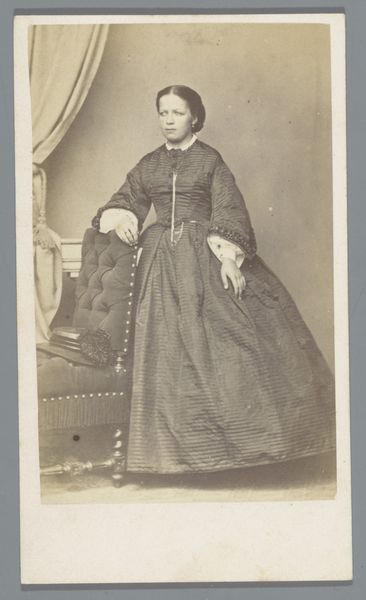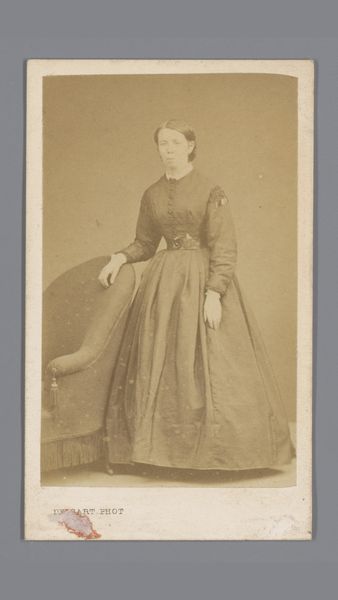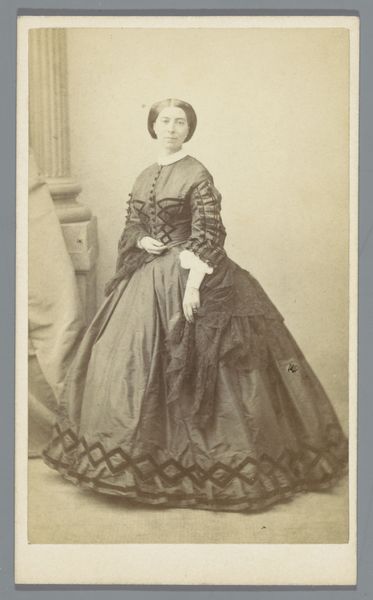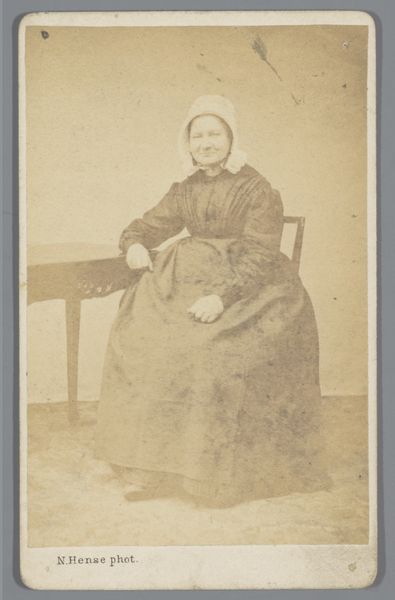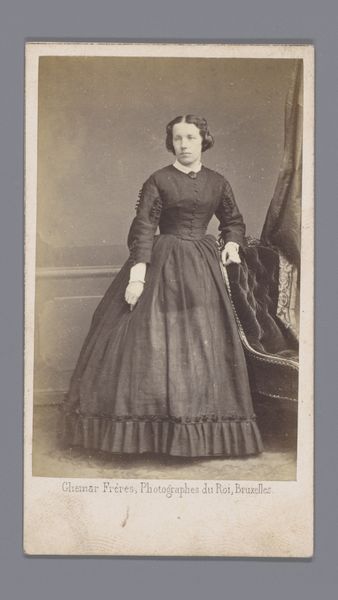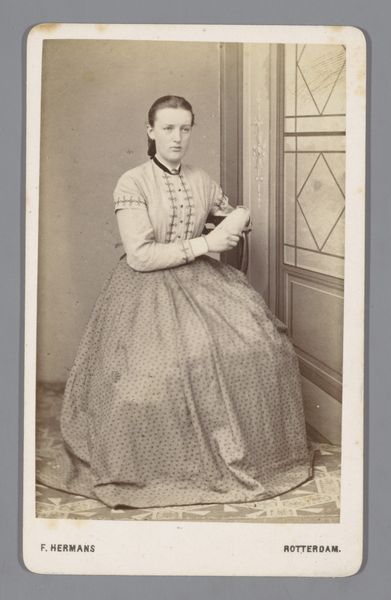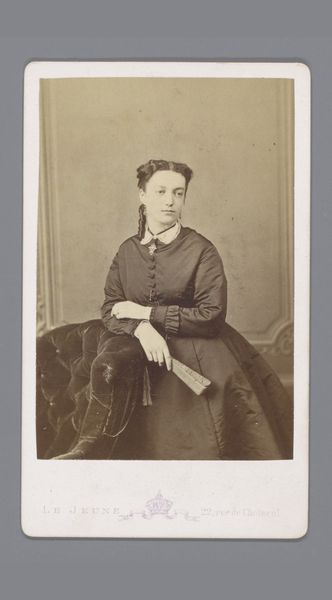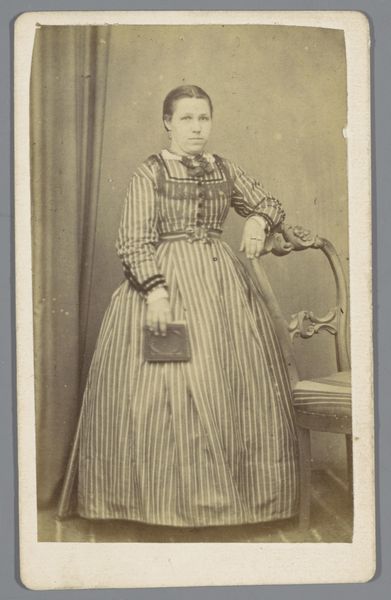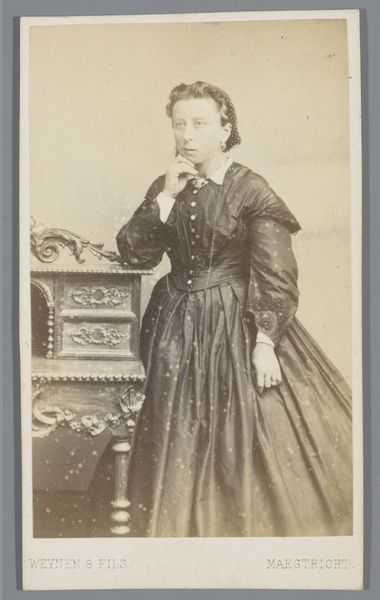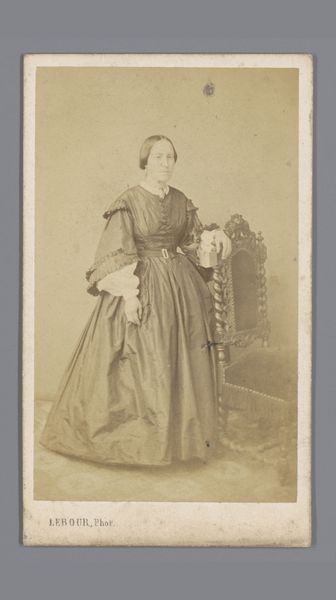
Dimensions: height 101 mm, width 61 mm
Copyright: Rijks Museum: Open Domain
Editor: This is a gelatin-silver print portrait from between 1855 and 1885 by Brismontier, titled "Portret van een onbekende man en vrouw," which translates to "Portrait of an unknown man and woman". There's an almost unsettling formality to it. What do you see in this piece, from a social or historical context? Curator: What I find compelling is the tension embedded within this staged domesticity. Photography in this era, while democratizing portraiture, also reinforced social hierarchies. Look at their attire. While seemingly of a middle-class status, their poses – particularly her seated position with what appears to be a book or perhaps her bible, compared to his standing authoritative presence – reveals prevailing power dynamics of gender roles within marriage and society. What are your thoughts on the use of clothing as cultural signals? Editor: That’s a great point about the power dynamics and dress. I was thinking about that too. I was sort of interpreting it, from looking at the tags as something sort of romanticist or genre painting… how does that mix with ideas of power that were so restrictive to some people, especially women at this time? Curator: Precisely. Romanticism, often viewed through rose-tinted lenses, obscures these inequalities. Photography like this perpetuated societal norms. Consider how this seemingly innocent portrayal also silences their individual identities, branding them as archetypes representative of societal ideals. By looking through today's intersectional lens we can critically dissect this portrait's silent narratives on class, gender and identity. It becomes a visual archive, echoing both public persona and societal aspiration. What assumptions can we safely infer? Editor: I see it now, this romantic framing sort of hides some realities that would have been known to everyone then, just through what everyone was wearing and how they were posing for the shot. It’s a contrast between presentation and experience, I guess. Curator: Absolutely. By analyzing art in its cultural environment and questioning dominant viewpoints, we foster crucial dialogues concerning representation, identity, and the social fabric of power dynamics. Editor: I never really considered that kind of in-depth social critique with photos before, it seems powerful. Thanks!
Comments
No comments
Be the first to comment and join the conversation on the ultimate creative platform.
